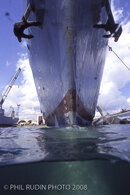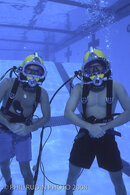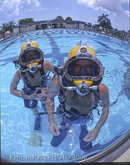SSA air takes a very long time to set up. It is inappropriate for rescue work because of this. It is also very expensive and requires training.
That being said, there seem to be some misconceptions about it.
It is actually in its element in shallow dives. Because it takes a long time to dress out a two man dive team it is maximally efficient for these guys to work as long as possible underwater. We regularly do two hour dives in less then 30 feet, this is the bulk of my team's work; I've seen guys go four hours. You just keep working and working with no need to swap out tanks on the divers, topside just keeps feeding tanks to the console. In these shallow dives we do not use BCD's, just a navy harness and drysuit. The manifold set up requires some form of bailout bottle, on real shallow dives we go all the way down to 19 ponies on our backs (unless under ice, then we have 80s and a series of modifications to the gear).
Most of our dives like this are on AGA. Some are on hard hats, but those are not good for swimming. They are designed for a diver who is negative and not able to get positive. I've tried swimming it with a BC, its nearly impossible and not worth it. It also does not fully protect you from contaminated water. Your choices are to have a dedicated drysuit built to mate with the neck dam or just wear the neck dam seal over the drysuit neck seal. The former becomes cost prohibitive because you would need two drysuits for basically each team member. The latter allows water intrusion into the neck area, especially if you get upside down. The neck dam is also neoprene, which doesn’t do well in petroleum, and in any case there's all kinds of bad stuff in the water that can penetrate a vulcanized rubber suit. The hard hats, in my opinion, are good for penetrating large vehicles or collapsed areas. Not good at all for working a jackstay with a metal detector.
On deeper dives with the AGA you can use a BCD, or set up a single tank wing on a navy harness. The latter is more elegant, I think, with less clutter. I'm on a surface supply line, I need nothing that I would be putting in a BC pocket. For our team, the dive sup keeps track of each diver's bottom time and depth (the console can read each diver's depth, we assume the diver will be unable to see gauges) with standard PADI no D tables, with navy deco tables as a back up in case the diver has an entanglement or some other issue that causes him to overstay his bottom time. This too is the beauty of SSA - if I get all tangled up at least I know two important things: the rescue diver can find me by following my line and I will not run out of air; plus my com line is a hard line so I do not have the issues associated with thru water coms.









